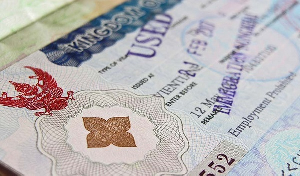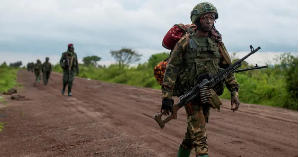When we last reported on the latest confirmed coronavirus cases on Friday, Ghana had recorded 9,168, an increase of 283 from the previous figure of 8,885 recorded last Thursday.
Suddenly, as of yesterday the cases have jumped to 9,638, up by 176 from its last update at 9,462 according to the latest updates from the Ghana Health Service (GHS).
According to the GHS, 89 more people have recovered increasing the recovery rate to 3,636 though two more casualties have been recorded bringing the total number of deaths to 44.
Until last weekend when President Nana Addo Dankwa Akufo-Addo, partially eased the COVID-19 restrictions, many Ghanaians were hopeful that the disease would soon be brought under control with the measures outlined to be observed by the public.
Unfortunately, the disease appears to be spreading so fast that many are beginning to question whether the measures instituted are adequate and citizens are playing their roles to contain the infection.
The Ghanaian Times is deeply concerned about the spike in the numbers and the question we ask is,why are the positive cases increasing so fast?
It is important for authorities to address this question and continue to educate and provide reasons why the numbers are going up rapidly.
At a recent bi-weekly press briefing, the Director-General of the Ghana Health Service, Dr Patrick Kuma-Aboagye had intimated that the GHS was adopting more proactive strategies to address the spike in Ghana’s cases.
“Daily cases are declining, admissions are declining, isolation centers are also seeing fewer numbers, and some of our treatment facilities have not yet received any patients.”
“There could however be occasional surges from time to time, and what we need to do is to identify those hotspots and quickly move in to deal with them, as we have done in Obuasi, Bibiani, and Tema.”
Already, health experts had predicted that with the country’s aggressive testing and contact tracing strategy, increase in cases were expected.
What is mind boggling however is that, aside the isolated case of the outbreak in an oil and gas company in the Western Region recently, affecting over 60 people resulting in the rise of the regions cases, the Ghanaian public is yet to know of what is pertaining in other areas where cases are coming from.
For instance a whopping 127 out of the 294 cases on Saturday came from the Ashanti region with the Kumasi metropolis recording the highest infection of 86 cases.
Also, in the Greater Accra region, the Ayawaso West municipality has remained a hotspot for the virus and still leads the region’s chart with 25 new cases, so is the Ayawaso East municipality with 18 new cases.
Because we are not out of the woods yet with the management of the virus despite the ease in restrictions, it is imperative that the experts come out with what they have discovered as regards what is accounting for the new infections in these areas and the resulting increase in the national case count.
In the meantime, we encourage Ghanaians not to be apathetic and be deceived by theories that the virus was non-existent and that reports on the cases were fabricated.
We encourage the public to strictly adhere to the safety protocols particularly to wearing a face mask at any given time to prevent possible infections.
The religious use of masks and practicing of physical and social distancing remains our best bet to avoid contraction and control spread of the disease.
Let us consistently wash our hands with soap under running water and use alcohol-based sanitiser where necessary to keep the virus at bay.
Click to view details



Editorial News of Wednesday, 10 June 2020
Source: Ghanaian Times
Ghanaian Times: Why are coronavirus positive cases increasing so fast?
Opinions
















